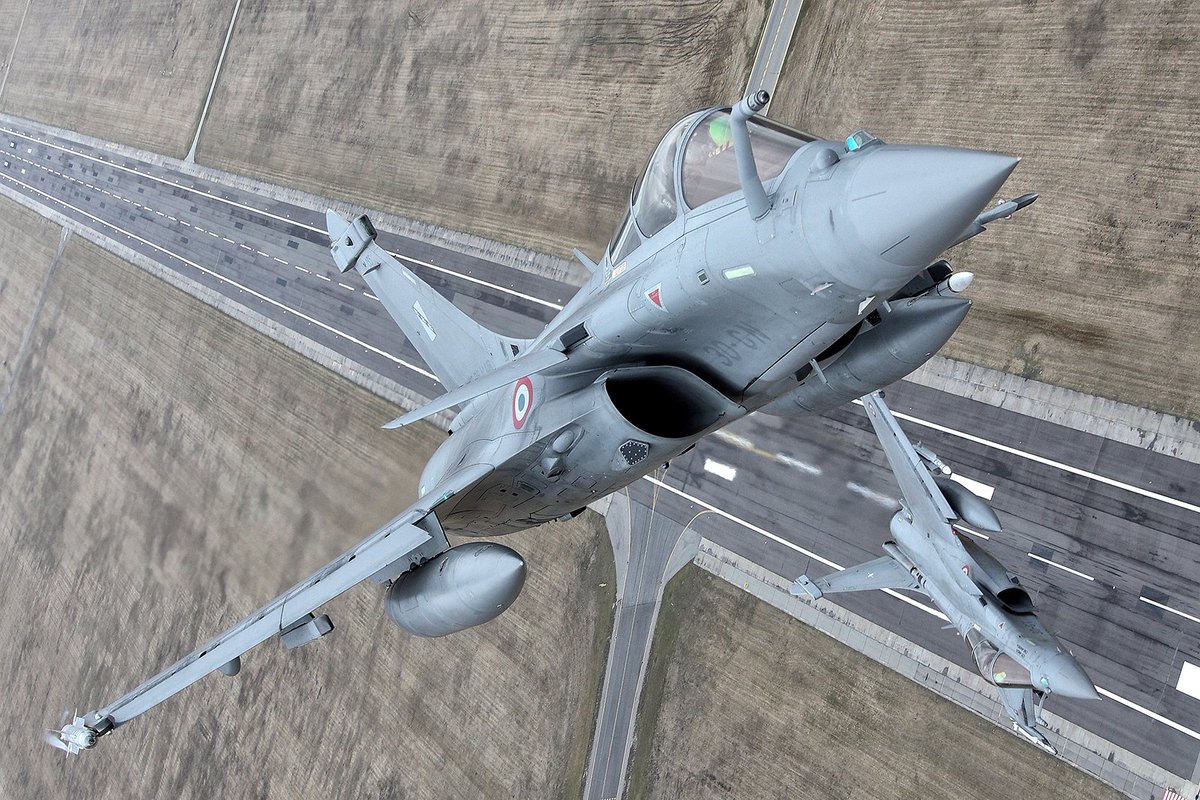The JF-17 fighter jet, a product of collaboration between Pakistan and China, is often portrayed as a powerful competitor to India’s Rafale fighter jet. Considered the “crown jewel” of Sino-Pak aviation relations, the JF-17 is a crucial asset for the Pakistani Air Force.
The latest iteration, Block III, even incorporates advanced technologies like the Chinese KLJ-7A AESA radar, a digital fly-by-wire flight control system, and a new helmet-mounted display.
Despite these advancements, it’s crucial to recognize that the JF-17 Thunder and Rafale are distinct aircraft designed for specific purposes and user needs.
The JF-17 is a lightweight, single-engine, multi-role combat aircraft, while the Rafale falls into the medium-weight, twin-engine, canard delta wing, multirole category.
Positioned as a cost-effective solution, the JF-17 has garnered interest from countries seeking modern fighter capabilities without a substantial financial burden, with exports to nations like Nigeria and Myanmar.
On the other hand, the Rafale, with its RBE2 AESA radar, excels in target detection and tracking, serving roles like air superiority, ground attack, reconnaissance, and nuclear deterrence.
While the JF-17 is more budget-friendly, the Rafale’s higher cost is justified by its advanced avionics, diverse weapon options, and enhanced agility, making it an appealing choice for air forces with larger budgets.
The Chinese label the JF-17 Block III as a 4th generation-plus fighter, claiming that its AESA and PL-15 combination would outperform all Indian Air Force aircraft, excluding the Rafale and upgraded Su-30MKI.

However, the Rafale, equipped with top-of-the-line AESA radar and the lethal Meteor missile, poses a significant threat to the JF-17.
This raises questions about the validity of comparing the two aircraft, with some critics viewing it more as a sales pitch than an objective evaluation of capabilities.
As the global defense landscape evolves, the JF-17 Thunder and Rafale represent different fighter jet development philosophies.
The comparison between these aircraft should be approached with a nuanced understanding of their unique features and intended roles in the ever-changing theater of military aviation.
JF-17 Vs. Mirage 2000
Rather than comparing the JF-17 with the Rafale, a more relevant comparison can be made with another French aircraft, the Mirage-2000 fighter jet.
In 2020, despite possessing superior aircraft like the Rafale, Qatar engaged its Mirage fighter jets in air combat exercises against Pakistani JF-17 Thunder fighters during the Zilzal-I exercise.
However, Qatar gave more respect to other Chinese-origin J-10C fighters recently when they employed Eurofighter Typhoons for the drills with Pakistan.
Rafale vs. Jf-17 is like comparing a Bengal Tiger with a Boar; we all know what will be the outcome of a clash, an Indian military expert quipped.
The Mirage, a classic French-designed fighter jet, has left an indelible mark on aviation history since its introduction in the 1960s. Known for its speed and versatility, the Mirage series has served in various air forces globally.
Over the years, multiple Mirage variants have undergone upgrades to enhance avionics, radar systems, and weapon capabilities. Despite its design hailing from a past era, the Mirage remains a crucial asset in the arsenals of several nations, including India, Pakistan, and Taiwan.
On the flip side, the JF-17 Thunder embodies a modern design that seamlessly integrates technological innovation with cost-effectiveness. Launched in the 2000s, the JF-17 is tailored to meet the evolving demands of modern air warfare.
The latest Block III iteration is equipped with the Chinese KLJ-7A active electronically scanned array (AESA) radar, a digital fly-by-wire flight control system, an updated helmet-mounted display, network-centric warfare capability, a holographic head-up display, an infra-red search and track (IRST) system, enhanced electronic warfare systems, and a radar cross-section reducing ‘pseudo-stealthy’ airframe.
Besides enhancements in sensors and avionics, Block III has the capability to be equipped with the PL-15 long-range air-to-air missile, which boasts an estimated range of 200 km (or potentially more).
The PL-15’s superior range outclasses any missile currently utilized by the Indian Air Force Mirage 2000 fighter jets, providing a significant advantage to the JF-17 fighter jet.
Yet, the Mirage boasts an impressive speed of Mach 2.2, surpassing the JF-17, which has a speed of Mach 1.6. The Mirage 2000 also stands out with its extended combat range, which is attributed to its larger internal fuel tanks, enabling prolonged airborne missions.
Furthermore, in comparison to the JF-17’s range of about 1,200 km, the Mirage 2000 surpasses it with a range of approximately 1,550 km.
These two aircraft did cross paths in the air in the past. Based on Indian media reports, on February 27, 2019, during an attempted counteraction to the Indian Air Force’s operation against a Pakistani terrorist group, the JF-17 faced challenges and showed suboptimal performance when encountering the IAF Mirage-2000.
Nonetheless, it is a reality that the JF-17 fighter jet is more modern and constantly adapting to meet contemporary threats. In contrast, several countries have already retired the Mirage from their air force fleets, and others are anticipated to retire this aircraft in the upcoming years.
Former IAF Air Marshall and serving Director General of CAPS, India – Anil Chopra, called the comparison between Rafale and JF-17 a ‘Flawed Comparison.’ He called it a sales pitch that China has developed to sell its ‘underperforming’ fighters.
- Contact the author at ashishmichel(at)gmail.com
- Follow EurAsian Times on Google News